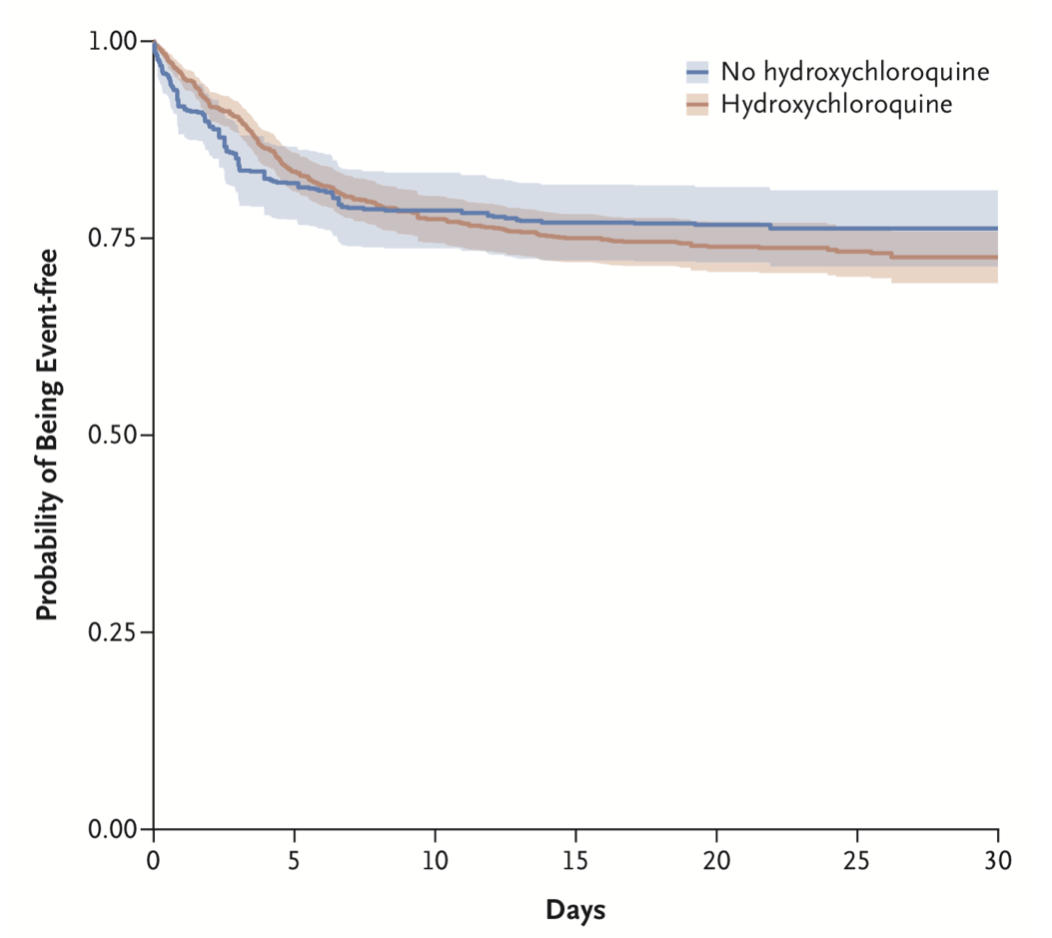This past week, new studies have shed light onto the risks/benefits and efficacy of hydroxychloroquine and remdesivir. For hydroxychloroquine, the preliminary data from New York’s recent clinical trial was published in the New England Journal of Medicine on Thursday (Geleris J, et al. 2020). This study was the largest to date (n=1,376), and tested both hydroxychloroquine with and without azithromycin. Overall, for hydroxychloroquine, there was no significant difference in the chance of adverse events such as intubation or death with or without the antibiotic supplementation (Figure 1, hazard ratio, 1.04; 95% CI: 0.82 to 1.3). Following the previous hydroxychloroquine data from Brazil that demonstrated detrimental effects at high doses and no significant differences at low doses (Borba MGS, et al. 2020), the once placed optimism for the hydroxychloroquine has diminished with new candidates such as remdesivir taking the spotlight. (Check the updates from 2 weeks ago for more on Borba MGS, et al. 2020)
Following last week’s EUA for remdesivir, there has been much discussion regarding access to remdesivir by physicians and hospitals who do not have ongoing clinical trials for the drug. Most hospitals that applied to acquire remdesivir for EUAs have been denied due to the drug’s limited availability. However, many concerns have been raised about the lack of transparency in the hospital selection process so far, and which governing body is currently making these decisions. To this end, Conan MacDougall, an infectious-disease clinical pharmacist at the University of California at San Francisco, has generated a map of the selected and non-selected hospitals (*Initial* Remdesivir Emergency Use Authorization Distribution Map). This distribution map has generated further discussion and has physicians calling the criteria for selection into question.

References
Geleris J, et al. (2020) Observational Study of Hydroxychloroquine in Hospitalized Patients with Covid-19. N Engl J Med. doi:10.1056/NEJMoa2012410.
Borba MGS, Val FFA, Sampaio VS, et al. Effect of High vs Low Doses of Chloroquine Diphosphate as Adjunctive Therapy for Patients Hospitalized With Severe Acute Respiratory Syndrome Coronavirus 2 (SARS-CoV-2) Infection: A Randomized Clinical Trial. JAMA Netw Open.2020;3(4.23):e208857. doi:10.1001/jamanetworkopen.2020.8857
MacDougall C., *Initial* Remdesivir Emergency Use Authorization Distribution Map, Tableau, 2020
Leave a Reply